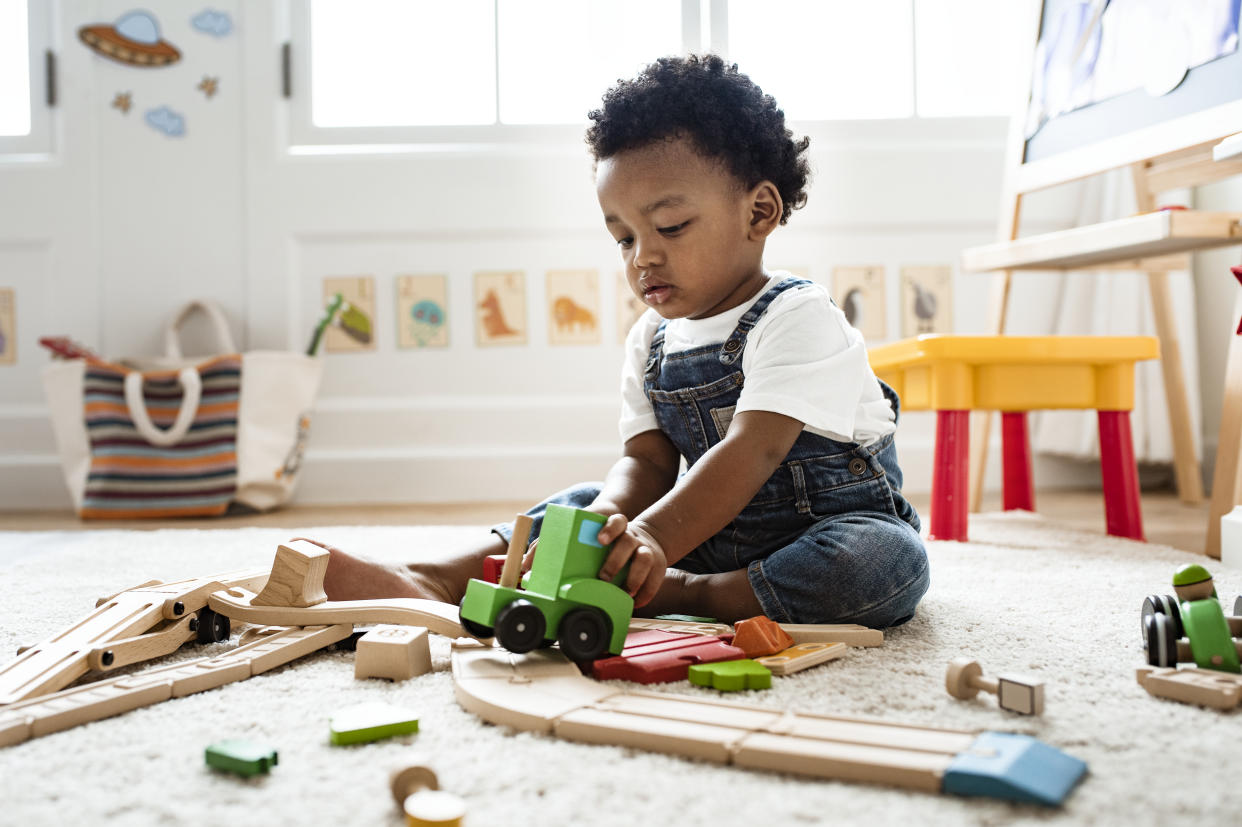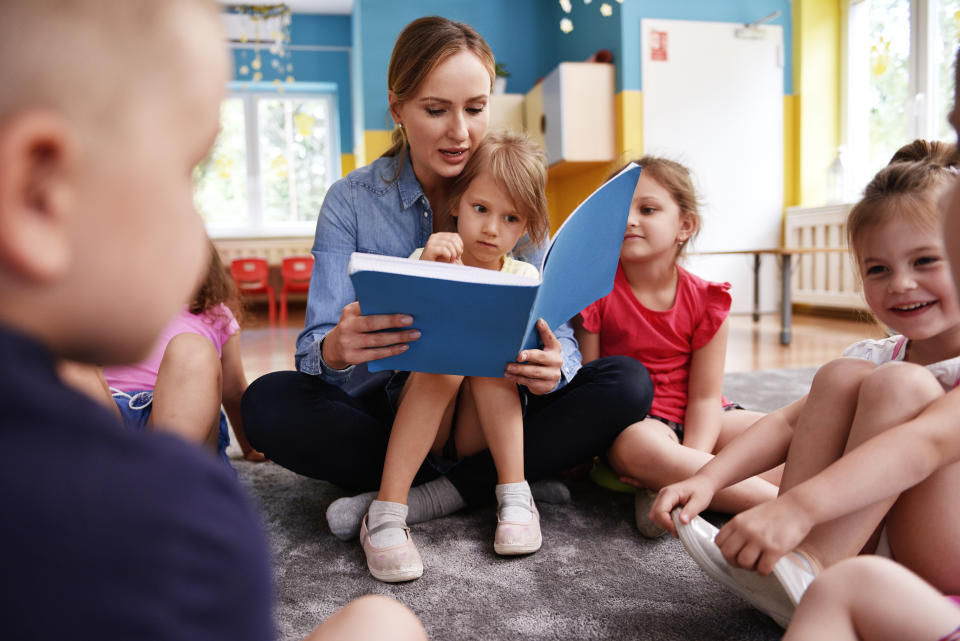What to ask your daycare before sending your kids back

As parts of the country begin to roll back shelter-in-place orders, daycares and other childcare providers in some states are getting the green light to reopen, albeit by following new guidelines from the Centers for Disease Control and Prevention. That’s welcome news for those who have been stretched thin by looking after small children while working, or having to arrange back-up, in-home childcare at great cost. But concerns about the ongoing threat of the coronavirus spread continue to nag many parents, who are wondering if it’s too soon, too risky.
“It is hard to predict because you never know what’s going to happen,” admits Dr. Meena Iyer, chief medical officer at Dell Children’s Medical Center in Austin, Tex., noting that some families will have little choice but to send their kids back to daycare as parents resume their own work.
Iyer tells Yahoo Life that the daycare dilemma is something even her medical colleagues — who would be deemed essential workers, and therefore entitled to childcare throughout the pandemic — have grappled with and discussed among themselves. Talking to childcare providers about the precautions they’ll be taking in response to the pandemic is the best way to assess risk.
“Things that families need to look for is first of all, how is the drop-off and pick-up?” Iyer says. “It should be more like a curbside drop-off and pick-up... with minimal contact between the parents and the staff members. For arrival and dismissal times, is it staggered, so you don’t have all the kids coming at the same time, all the kids leaving at the same time? How are they monitoring every staff member who comes into the daycare? What screening questions are they asking, and what screening are they doing for the parents?
“What protocol do they have in place if a staff member falls sick... What protocols do they have in place if one of the children falls sick? The other big thing is, how many kids do they have in each classroom, what is the age group they’re splitting them to, what is the ratio between the teacher and the child? ...Those are things that as a parent I would look for before sending my child back to daycare.”

Most of these concerns are covered by CDC guidelines tailored to childcare programs. States like Texas and Maryland — which have announced plans to reopen childcare centers previously shuttered or servicing only the children of essential workers — are requiring providers to follow new health and safety protocols based on the CDC recommendations. The “enhanced social distancing measures” include maintaining social distancing; encouraging healthy hygiene via regular hand washing and face masks for staffers; more rigorous cleaning and sanitizing procedures, particularly in common areas; and running daily health screenings and temperature checks, vetting those who present a fever or cough.
While the exact implementation of these guidelines may vary by provider, some of the changes parents can expect to see include:
•Cancelation of field trips and summer outings, events and activities
•Increased cleaning and/or disinfection of frequently used items, such as tables, playground equipment, toys, crib sheets, bathrooms and changing tables
•Limited sharing and the keeping of items separate, including food and utensils, personal items and toys
•An adjustment of caregiver-child ratios so that the same teacher oversees the same group of children each day, with consideration for social distancing and minimal contact with other groups
•Closed or limited access to communal spaces
•Limited building access to essential personnel, and the encouraging of high-risk staffers to telework
•Keeping drop-off and pick-up outside, with screenings and temperature checks for children, staffers and any other individuals entering the premises
•Policies restricting access to staffers and children exhibiting symptoms or possible exposure
That last consideration is particularly important, says Emily Oster, an economist and writer famed for the parenting books Expecting Better and Cribsheet.
“I think I'd focus on approaches to symptomatic kids or teachers,” the Brown University professor, known for her data-based research, tells Yahoo Life. “The best prevention is likely to be making sure no one is coming in with any symptoms. This will not prevent asymptomatic spread, but it is likely to make things much better. Handwashing rules, etc., are also important, but those may be less easy to police.”
And it’s a two-way street, Iyer points out. If you’re a parent with kids heading back to daycare, self-monitoring to ensure that you and your family are symptom-free is the responsible thing to do and helps limit any transmission. Iyer recommends taking temperatures daily, and keeping an eye out for coughs, abdominal pain, diarrhea, and, in kids, symptoms of Kawasaki disease, such as a rash. If you’ve been exposed to a confirmed or suspected COVID case, it stands to reason that your children have too. Keeping kids home from daycare until a pediatrician’s been consulted is a sensible solution.
Iyer says pediatricians can also be a handy resource for parents with concerns about cases in the community. Data modeling analyzing local cases, hospitalizations and deaths is being used to inform decisions about reopening businesses and is “something that we as health care workers are monitoring every day,” she says, adding the caveat that “this is all an estimated guess — no one knows for sure.”
“I strongly encourage families to talk to their pediatricians to ask them what to look for,” she says. “The pediatricians should also know some of the daycares in the area … they can be a great guide for families.
“Talk to them about what’s happening in the community, but if things are like they are right now — [with masks], social distancing, washing their hands, self-monitoring — all these protocols in place with daycares will help [families] stay safe.”
Oster, whose latest newsletter breaks down her framework for mitigating the risks associated with daycare and visits with grandparents, acknowledges that the overwhelming sense of uncertainty is prompting many parents to simply put off making any immediate decisions. With a possible vaccine estimated to take at least a year to develop and make publicly available, however, it’s difficult to say if that hesitancy will offer any clarity.
“It isn't clear that much will change now versus a month or two from now,” she says. “Some people may think that they are happy to not use daycare at all until there is a vaccine, but if you do plan to return at some point in the next year (or more), it's not clear there is much different now versus a month or two from now.
“Things evolve rapidly,” she adds. “It's hard to say that there is no value in waiting since maybe we'll learn more about prevention or treatment, and there is always a possibility of some giant breakthrough. In my view, this seems unlikely and I think the value to waiting is probably small for many people.
“‘Wait and see’ is sometimes a substitute for ‘confront the reality of no perfect solution.’”
For the latest coronavirus news and updates, follow along at https://news.yahoo.com/coronavirus. According to experts, people over 60 and those who are immunocompromised continue to be the most at risk. If you have questions, please reference the CDC’s and WHO’s resource guides.
How to maintain your physical and mental health during the pandemic
Taking care of a loved one with COVID-19? Here’s how to stay healthy
Q&A with Dr. Kavita Patel: How to keep your family safe and maintain your mental health
Read more from Yahoo Life:
Want daily lifestyle and wellness news delivered to your inbox? Sign up here for Yahoo Life’s newsletter.


